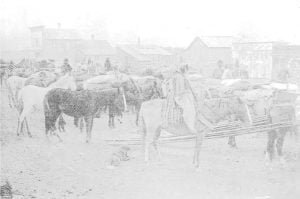Flathead Indians of Bitter Root Valley Montana
The article “Extracts from Senate Executive Document #231 of the 51st Congress, 1st Session concerning Flathead Indian Allotments in Montana, 1889” provides a detailed account of the removal of the Flathead Indians from the Bitter Root Valley to the Jocko Reservation in Montana. This document includes a list of Flathead Indians who consented to the land release, along with the relevant acts and supporting documents. The Bitter Root Valley lands, spread across nine townships, were affected by several legislative acts, starting with the Act of June 5, 1872, and subsequent amendments up to 1898. The document also includes certifications, orders, and agreements related to the land allotments and removal process. Additionally, it references various sources for further information, including the United States General Land Office records, St. Ignatius Mission records, and Missoula County court records.

